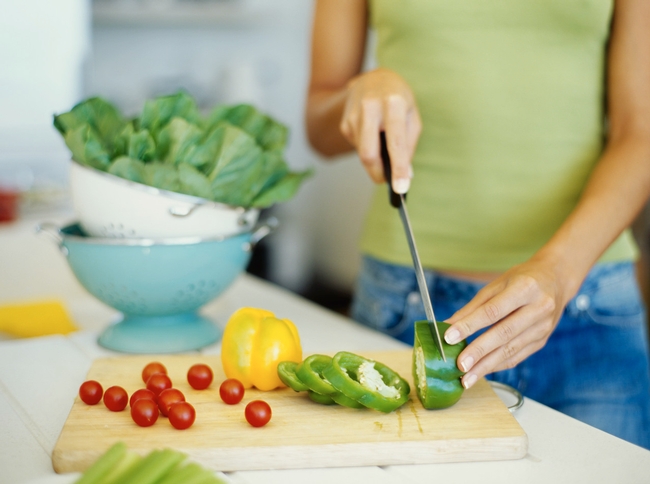
The deadly e.coli outbreak in Germany is being attributed to raw sprouts. However, during the last 10 years in the U.S. major outbreaks of foodborne illness have been attributed to other produce, including lettuce and leafy greens, tomatoes, cantaloupe, herbs (basil, parsley, cilantro) and green onions.
What can you do to reduce the risk of food poisoning when preparing fruits and vegetables at home?

1. Wash your hands before handling produce.
This is the most important and easiest thing you can do to prevent food borne illness when handling produce---or any other foods at home.
However, many people skip this step. In a national survey of 2,000 randomly selected households in the U.S., almost 50% of respondents said they didn't always wash their hands when preparing fresh produce at home.
Wash your hands for 20 seconds with warm water and soap before and after preparing fresh produce.
2. Wash your cutting board, knives and preparation areas.
Warm water and soap work here too. You can wash plastic cutting boards in the dishwasher.
3. Wash the sink before and after washing and preparing produce.
This will prevent cross-contamination from the produce to other foods.
It's also a good idea to sanitize the sink, drain, and counter tops several times a week and after handling raw meat or poultry. Sanitize more often if your household includes anyone who is in a high risk group: young children, pregnant women, immune-compromised individuals such as diabetics, or older adults.
Make your own sanitizer in a spray bottle: mix 1 teaspoon of chlorine bleach into a quart (4 cups) of water. Replace the solution daily.
4. Wash fruits and vegetables* under cool running water.
Wash fruits and vegetables just before preparing or eating them to preserve freshness. This includes locally grown and organic produce, as well as that grown in your home garden.
How?
Hold the fruit (with your clean hands) under the running water. Wash small produce such as berries, muhsrooms or cherry tomatoes in a colander.
When possible, scrub firm fruits and vegetables such as cantaloupes, cucumbers and potatoes with a clean scrub brush before cutting or peeling them. If they are not washed, your knife can transfer bacteria from the skin or rind to the cut fruit. (You can wash vegetable scrubber in the dishwasher with your cutting board.) .
Why?
Using cool running water to wash produce is safer and more effective than soaking it in water which can lead to cross-contamination or using commercially-prepared "produce washes" which have not been tested for human consumption. Avoid anti-bacterial soaps and dish detergent since these may leave residues on your fruits and vegetables.
Don't assume pre-cut, pre-packaged produce* has already been washed. Check the label. If the bag doesn't say it's prewashed, then wash the produce before you eat it.
![3311 Fig 3601[1]commercially bagged salads 3311 Fig 3601[1]commercially bagged salads](http://ucanr.org/blogs/SSWHBlog/blogfiles/7495.jpg)
*Ready-to-eat prewashed, pre-bagged greens do not need to be washed.